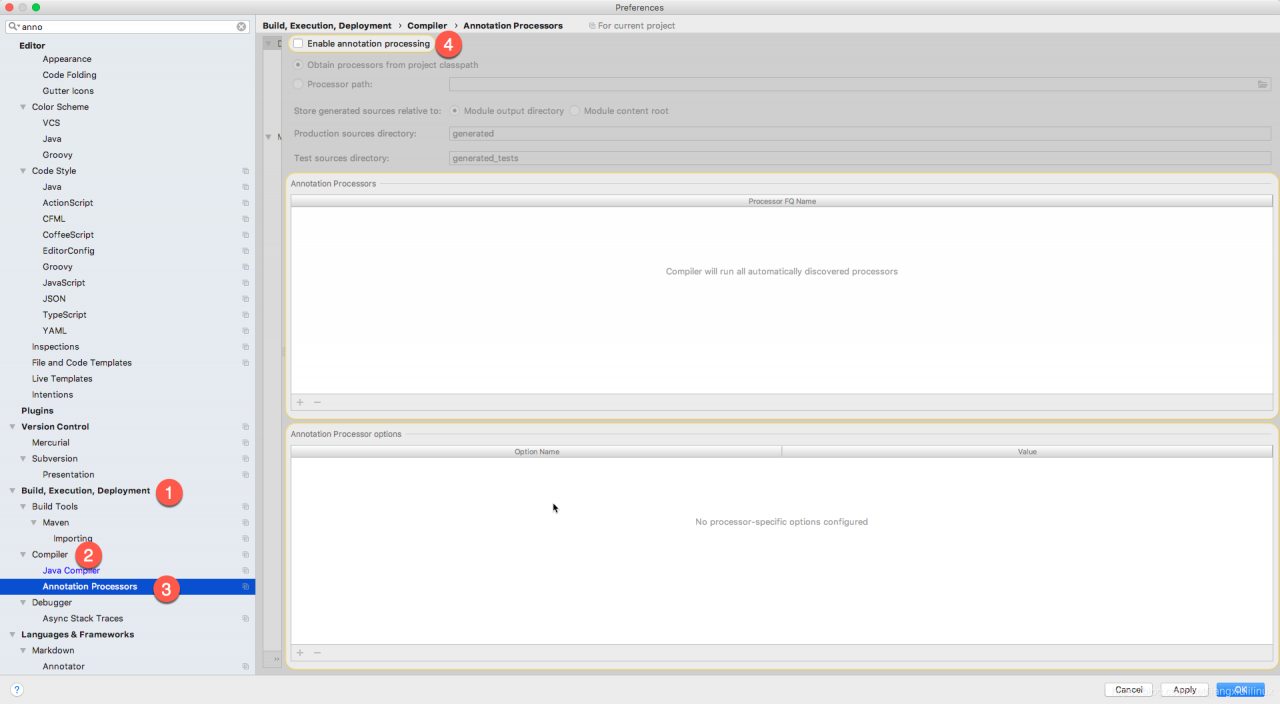
However, they will not be subject to annotation processing. This last step includes resolving references to external libraries, whose classes also need to be compiled. Then, for each annotation, the corresponding Annotation Processor is called, which may generate new source files.Īll newly generated source files are then feed back to the parser as they also need to be parsed and may include further annotations.įinally, when no new source files have been generated, the syntax trees are translated into class files. With the release of Java 8, annotations can also be applied to the use of types, such as in: // Class instance creation expressionĬlass UnmodifiableList implements List Īs already mentioned, annotations are processed during the compilation and not during runtime, as shown in the figure below ( Source).Īll Java sources files are feed into the parser, which generates Abstract Syntax Trees and fills the compiler’s symbol table. Java 8 introduced some new annotations such as the FunctionalInterface, which is used to marked functions, which can be used in Lambda expressions.Īdditionally, before Java 8, only declarations of classes, fields, methods, and other program elements such as parameters could be annotated. Java 6 came with 3 standard annotations, such as in order to check if annotated method actually overrides a parent method or implements a method from an implemented results in a compiler warning if a method is used that has been marked as deprecated by the may be used to suppress these or other compiler warnings. Annotation OverviewĪnnotation have been introduced with Java 6, which was released in December 2006, and provide an easy mechanism for adding further information for your Java source code. You can read more about that in the Java documentation. Most importantly, reflection imposes impose a performance penalty when accessing the object properties.Īdditionally, it may introduce security issues and expose the inner workings of a class. They stand in contrast to Reflection, which is all about retrieving, examining & manipulating properties of objects at runtime but comes with certain drawbacks. Java AnnotationsĪnnotations simply act as markers and provide additional information to the Java compiler during compilation, but have not effect on the application at runtime. TLDR: This post implements a custom annotation processor that generates convenience functions for missing features. We are going to talk about Annotation Processing in Java, what it is all about, how it integrates with the Java compiler and how you can write your own annotation processor. Or maybe you simply want to learn more about the annotations and the java compilation process, then this post is for you.
#Compiling java processing code
Or do you have nice use-case that would benefit from automatic code generation? (Optional) Options to pass to annotation processors.Have you ever wondered what the on all your methods really means and how it is used under the hood? Project Properties > Build > Compiling > Processor Options fieldĪdd options that should be passed to the annotation processor associated with your project. This path is searched for annotation processors if the -processorpath option is not specified. Specifies where to find user class files, and (optionally) annotation processors and source files. Use this option if an annotation processor and annotations are packaged into a single JAR file.

Specify the path to an IDE project, library or a JAR file that contains an annotation processor and annotation declarations. Project Properties > Libraries > Compile tab Specifies where to find annotation processors if this option is not given, the classpath is searched for processors (see below). Use this option if an annotation processor and annotations are packaged into separate JAR files. Specify the path to an IDE project, library or a JAR file that contains an annotation processor. Project Properties > Libraries > Processor tab The annotation processor discovery mechanism is not used during compilation. When the checkbox is disabled, the project is compiled without any annotation processing.Ĭompilation proceeds without any annotation processing. Project Properties > Build > Compiling > Enable Annotation Processing checkbox This option eliminates the need to create service provider-configuration files (META-INF/services/) Specify a fully qualified name of the annotation processor in the Annotation Processors field.Įxplicitly specifies the annotation processor to run. Project Properties > Build > Compiling > Annotation Processors field.


To open the project’s Properties window window, right-click your project and choose Properties. In the IDE, the annotation processing options for all Java application with the exception of NetBeans platform applications are specified in the Project Properties window.


 0 kommentar(er)
0 kommentar(er)
